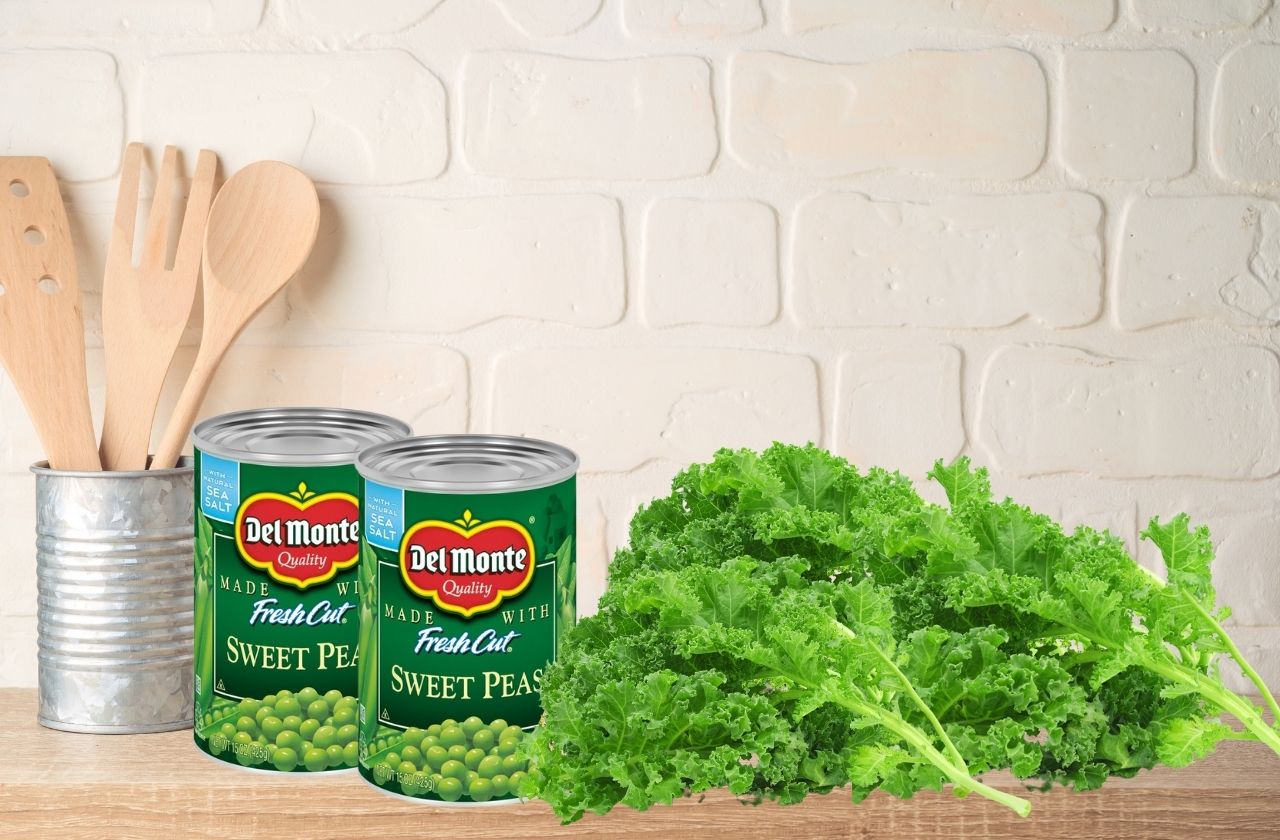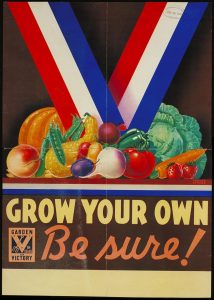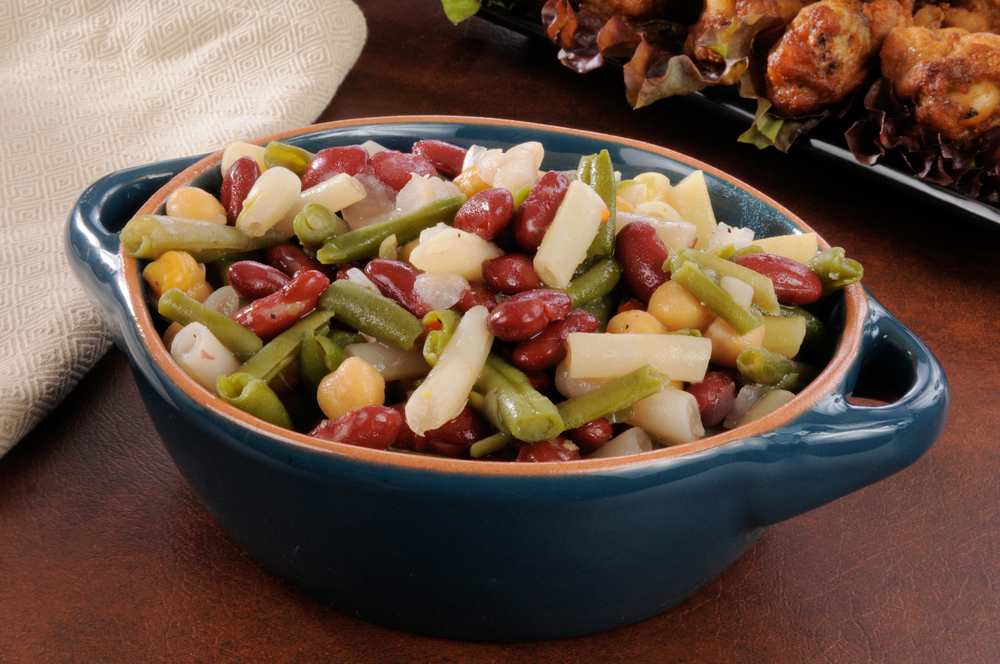
Kale vs. Canned: How Marketing Messes with Your Pantry
Written by Yaffi Lvova, RDN
It’s the fight of the century. In one corner we have Kale! Kale is the frontrunner for Healthiest Food in the Universe, the poster child for clean eating everywhere! But can it hold its own against…
Canned Green Beans in the other corner! Long abashed and fueled by pent-up rage and a bit of dust on the lid, CGB is coming at Kale with everything it’s got!
Who will end up in your shopping cart?
Nutrition can be confusing. One day the egg is a great source of nutrition, and the next, it will single-handedly cause heart disease. One day coconut oil will save your life and the next it will kill you immediately.
But what if it wasn’t nutrition that changed? What if while our knowledge of nutrition has been growing steadily over the years, it’s actually the media giving you nutritional whiplash? What if kale isn’t so great, but canned green beans… might be ok?
In the early 2000s, kale was known mainly by those who owned tortoises or managed Pizza Hut franchises. At least the tortoises were eating the kale. Pizza Hut was using the green leafy vegetable at thousands of US locations to garnish the salad bars. Nope, nobody was eating it. Aside from the tortoises. Crunch.
So how did kale end up on the menu at every high-end or corner restaurant? Even more, why was it featured on bumper stickers, sweaters, and even embroidered pillows? Oberon Sinclair, the genius behind the marketing push, was hired in 2013 to make it happen. Who hired her? The American Kale Association, of course.
But the plot thickens. One might think that the American Kale Association would be composed of farmers, perhaps those involved in shipping, or maybe even the tortoises mentioned earlier. But the truth is that nobody who had been involved with the growth or shipment of kale was familiar with this organization. As it turns out, the American Kale Association was a figment of the imagination–of Oberon Sinclair’s imagination. It had been her personal agenda to convert the masses and make them lovers of kale. Well, Oberon, checkmate. You win.
But is kale as good as Oberon Sinclair wants you to believe? According to Mayo Clinic, kale in its many forms is a wonderful source of A, K, B6, and C, calcium, potassium, copper, and manganese. It is low in calories and low in carbohydrates. It has more iron than steak and more calcium than milk (by weight and volume respectively). It’s full of antioxidants to help fight cancer and sulfur compounds to help the liver naturally detoxify your body.
But, the story isn’t all that sweet. Kale growth was encouraged during the Victory Garden era
 that followed WWII, and then was grown through most of the 20th century as a decorative plant. Although America doesn’t have a history of enjoying kale, it was included in the many Victory Garden pamphlets enthusiastically given to the public due to its easy-to-grow and hardy nature. Eating kale was a great way to supplement meager rations with essential vitamins, minerals, and antioxidants. People presumably ate the kale they grew in these small gardens, such as in this Creamed Kale recipe from the 1950s, but once kale production went commercial, that all changed.
that followed WWII, and then was grown through most of the 20th century as a decorative plant. Although America doesn’t have a history of enjoying kale, it was included in the many Victory Garden pamphlets enthusiastically given to the public due to its easy-to-grow and hardy nature. Eating kale was a great way to supplement meager rations with essential vitamins, minerals, and antioxidants. People presumably ate the kale they grew in these small gardens, such as in this Creamed Kale recipe from the 1950s, but once kale production went commercial, that all changed.
People stopped eating kale–and almost as soon as there was any other viable option. It turns out that Victory Garden kale wasn’t as sweet or attractive as the varieties available in your local store these days. That’s right, experts say that the baby leaf curly kale available now is much tastier than the wartime version.
That brings us back to Pizza Hut. Because commercially grown kale wasn’t meant to be consumed for most of the last century, farmers didn’t have to be careful to ensure its safety. In 2009, more than 92% of kale still had residue from two different pesticides after appropriate washing. In 2022, kale holds spot #3 for produce with the most pesticide residue.
Does kale provide nutrition? Yes.
Can you get that nutrition elsewhere? Also yes.
How can I enjoy my delicious kale salad? Washing kale with water removes about 55% of pesticide residue. Washing with vinegar can remove more. Add 1 cup of white vinegar to a sink full of water and submerge your kale fully. Let it soak for 15 minutes. Drain the water and give the kale a quick rinse. To dry, lay the kale out on a kitchen towel until completely dry or hand dry each piece individually. If not dried, kale will turn to mush. Not delicious.
Ding ding ding! And now back to the ring. Kale has slipped on its own pesticide residue and seems to be faltering. Canned Green Beans is gearing up for quite a punch…
Canned products have been the butt of many a joke for a long time. You’ve probably heard that they are devoid of nutrition. Lacking in every respect. Not worth your time or your money. But how much of that is backed up by good old science?
When doing a side-by-side comparison of the nutrition in fresh green beans vs canned, you’ll see that both contain the exact same amount of fat, protein, and carbohydrates. The canning process doesn’t affect macronutrients. But would you be surprised to hear that canning actually helps to preserve certain nutrients?
The heating and sealing processes involved in canning can help preserve the fat-soluble vitamins A, D, E, and K. However, the water-soluble vitamins B and C are found in lower amounts in canned goods. The good news is that these vitamins are found in many common foods, and therefore can be easily made up in the diet without any effort.
But what about sodium? Sodium is found in higher amounts in canned goods in general. If you’re sodium-conscious, consider purchasing low-sodium canned veggies and rinse them before eating.
Surprisingly, some canned vegetables also have added sugar! I don’t know about you, but I’d rather have my sweets as ice cream than as canned corn. Check the label and select the product that is right for you and your family. Oh, and while you’re at it, check for dings in the can–that is a risk factor for botulism.
Canned vegetables are affordable and convenient, and they keep for a long time.
So who is the winner? You.
There is no perfect food out there. Make your plate colorful, then take some time to enjoy it. Ignore the super-dramatic headlines–chances are that someone is trying to sell you something. Even kale.
A delicious post-script:
Over the past two years, Victory Gardens have regained popularity. You can read more about that here.

There is no perfect food out there. Make your plate colorful, then take some time to enjoy it.
From our own Food Editor, Shoshana Isaacson, The Out Of Town Cook:
Classic Three Bean Salad
Ok, so it is really a four-bean salad, but it is delicious and uses canned vegetables in a way that makes them flavorful and fresh.
Ingredients
1 15-ounce can green beans
1 15-ounce can kidney beans
1 15-ounce can wax beans
1 15-ounce can chickpeas
1/2 small onion
2/3 cup white vinegar
1/3 cup apple cider vinegar
1/3 cup granulated sugar (See? You know it’s in there! Nothing hidden.)
1/4 cup grapeseed or avocado oil
1/2 teaspoon kosher salt

Step by Step Instructions
Step 1
Drain each can of beans in a colander and rinse with cool water, shaking gently to drain then add to a mixing bowl.
Step 2
Thinly slice the onion into ¼ moon slices and add to the bowl.
Step 3
Whisk the vinegars and sugar in a small bowl with the oil and kosher salt. Pour over the beans and onion and toss lightly.
Step 4
Refrigerate for 2 hours or overnight to meld the flavors, serve chilled or at room temperature.
Related Articles
Related
Top Health and Wellness Goals for 2023
One of the silver linings of the recent pandemic is that many of us have become more health-conscious and that has led to a surge in people wanting to learn more about their health purely for health’s sake. A recent Australian survey found that almost half of the...
Who is in Your Gut? Adventures in the Microbiome
You’ve probably heard the term “microbiome”. Perhaps you’ve perused the probiotics aisle at your local market. Maybe you’ve even gone as far as making kombucha in a jar on your kitchen counter - which quickly turns into ten jars of kombucha on your kitchen counter....
The Heartbreak of PTSD: A Mother’s Perspective
War doesn't end. War just changes locations, taking up residence in the homes and hearts of individuals. Such is war-inspired PTSD (post-traumatic stress disorder).Matan Nachmani served bravely in the Second Lebanon War. The horrors of war have not ended for this...
